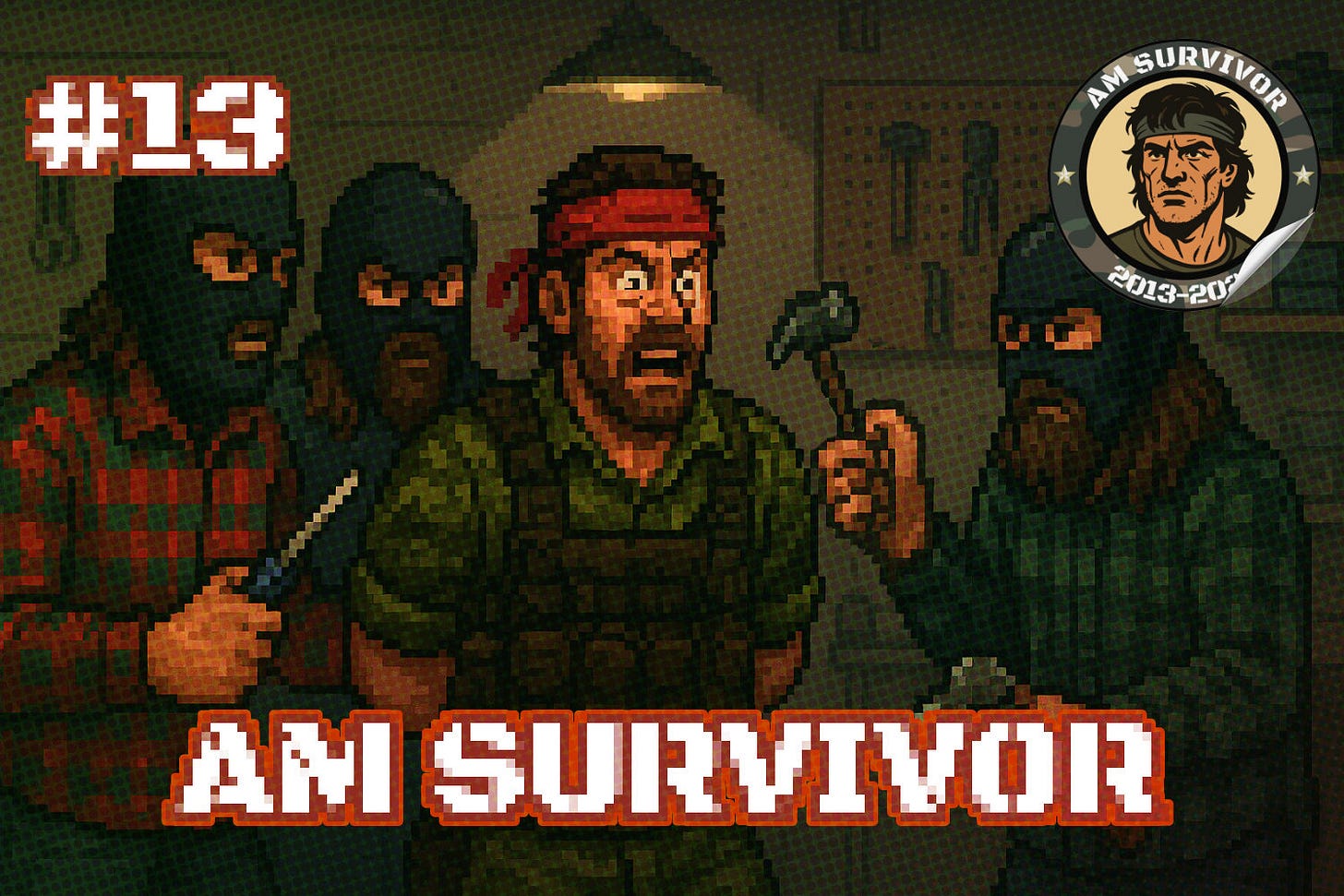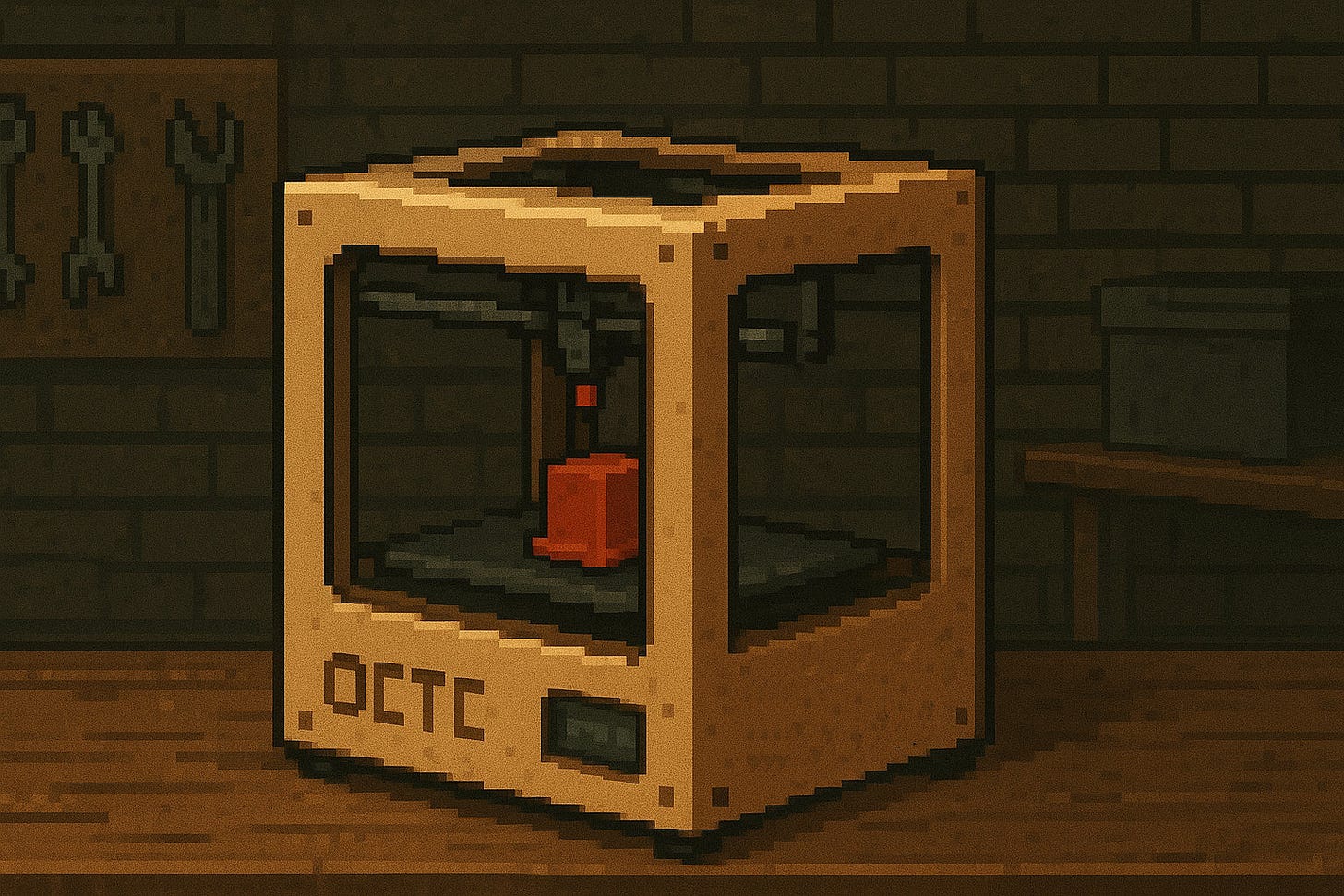Hostages of the open-source community
AM Survivor #13
MakerBot, Ultimaker, and Prusa Research are, on one hand, companies that for years shaped the desktop 3D printing market. On the other hand, they are icons of the open-source and open-hardware movements, direct descendants of the RepRap project.
Yet there is also a third perspective: the first two have become faded brands, while the third remains a lone fighter from the Western world in a market dominated by Chinese manufacturers.
Still, there are people who remember that MakerBot and Ultimaker were once heralds of the “do-it-yourself” ethos, champions of open knowledge exchange, and believers in the idea that anyone could contribute to the evolution of technology.
These brands did not emerge from the sterile labs of corporate giants but grew out of garages, workshops, and internet forums where enthusiasts shared code, blueprints, and experiences.
The founders, deeply rooted in the RepRap project, promoted the philosophy of open-source and open-hardware in 3D printing - the belief that machine design should be transparent, modifiable, and accessible to all.
In those early days, users became co-creators: they tested prototypes, reported bugs, proposed improvements, and in doing so drove the growth of companies that were able to transform passion into widely available products.
The best example of this process is the story of Prusa Research. Its founder, Czech maker Josef Průša, published designs for his 3D printers - Prusa Mendel, Prusa i2, and ultimately the iconic Prusa i3. In doing so, he not only created a blueprint for countless imitators but also built a movement that helped refine and promote the printer worldwide. Thanks to transparency and active community involvement, Prusa became almost synonymous with affordable, well-designed 3D printers.
Although today only a handful of people still recall it, MakerBot and Ultimaker shared the same beginnings. Their first models were born in the spirit of openness, with shared documentation and software, which built loyalty and dedication among users ready to recommend their products and defend the brands against criticism.
From hobby to business
Over time, however, the story grew far more complicated. Transitioning from hobby projects to professional businesses revealed just how many hidden costs and obligations come with sustaining a product in the market.
When 3D printers ceased to be a curiosity for hobbyists and began to be sold on a mass scale, new demands appeared: research and development, compliance testing, safety certifications, complex logistics, and expanded technical support.
All of this required capital and organizational structures that could not be built solely on volunteerism and enthusiasts’ goodwill. Added to that was the pressure of investors - especially for companies like MakerBot and Ultimaker that took external funding. Investors expect returns, growth, and protection of intellectual property. These expectations often stand in sharp contradiction to the principles of openness.
In practice, this meant companies had to make tough choices: should they remain fully transparent, risking weaker control over intellectual property and reduced revenues, or should they start protecting their innovations in order to recoup development costs?
By the mid-2010s, yet another force entered the equation - companies from Taiwan and China producing cheaper clones of open-source designs. Firms like XYZPrinting, Creality, and Anycubic exploited open plans to manufacture low-cost equipment, which further weakened the position of original creators, who had to bear the expenses of research, development, and higher-quality components.
Prisoners of their own ideals
This accumulation of pressures led to a situation where the companies became, in effect, hostages of their own communities and the ideals that had birthed them. The open-source community played a dual role: it was both the engine of success -providing tests, fixes, and free publicity - and an unforgiving judge, ready to denounce any step toward commercialization.
Closing a fragment of software, changing a license, or introducing proprietary, incompatible components often provoked outrage and accusations of betrayal.
Bre Pettis and MakerBot felt this particularly harshly: once a darling of the community, the company quickly transformed in its eyes into a traitor.
This history constrained strategic freedom. Every attempt to patent a new solution or introduce a closed module designed to safeguard revenue risked a backlash and the loss of trust. Paradoxically, the very community that was the companies’ greatest strength also became their limitation. Losing its support could mean the loss of brand identity, and with it, a significant share of customers and ambassadors. For firms that emerged from the RepRap movement, it became clear that maintaining a balance between openness and commercialization was a high-stakes game.
Different strategies, same dilemma
Case studies illustrate the divergent paths and their consequences. MakerBot is the clearest example of turning away from the community. Starting as a project tightly linked to RepRap, it gradually closed off its technology and ultimately became part of Stratasys—the very symbol of what it had once opposed.
For Stratasys, MakerBot was never more than a portfolio product.
For many of its early supporters, this was the turning point, the moment enthusiasm gave way to disillusionment. MakerBot was no longer an innovative brand fueled by users, but simply one of many commercial hardware vendors.
Ultimaker’s story is more nuanced. The company also wrestled with market consolidation and the need to professionalize its offerings. For years, it attempted to merge open-source ideals with a gradual shift toward commercial models.
From the very strong Ultimaker 2 to the even better dual-extrusion Ultimaker 3, each successive iteration became more of a variation on its earlier models, and eventually, less innovative.
Today, Ultimaker is an odd blend of its original community-driven designs with industrial features aimed at positioning the brand in the professional segment.
Prusa Research, meanwhile, continues to walk a tightrope between two worlds. Josef Průša and his team have introduced certain closed elements—firmware, proprietary components, premium support—while still deeply engaging with the community by running a project-sharing platform, hosting competitions, and releasing many open resources.
This balancing act lends the company authenticity but simultaneously marginalizes it in the global market.
Today, Prusa is rarely mentioned in the same breath as Bambu Lab, Creality, or even Elegoo; it is viewed instead as a niche alternative for hobbyists and open-source enthusiasts.
Searching for a third way
Looking toward the future, one must ask whether a third way is even possible—a model that reconciles open-source values with the demands of large-scale business. One proposed path is the hybrid model, in which the core of the technology remains open, while advanced features, premium support, or enterprise-grade solutions are commercialized and closed.
This arrangement resembles Android, where the base code is open but additional services and certified elements are proprietary. Yet even this strategy is risky: the community may see it as a disguised betrayal of ideals, while competitors can exploit the open core to launch cheaper alternatives without investing in further development.
Even if such a hybrid model delivers short-term financial success, questions linger about long-term identity. Would becoming a provider of closed solutions destroy what once made the company unique and sever its bond with the most loyal users?
Each company must resolve this dilemma on its own, weighing its resources, history, and ambitions.
In the end, the stories of MakerBot, Ultimaker, and Prusa Research reveal a paradox. Success and growth do not always ensure stability—in fact, they can magnify the tensions between ideals and market realities.
These firms remain hostages not just of open-source principles but of the love, expectations, and scrutiny of the communities that brought them to life.
Their struggle is not only a market battle but also a fight for their very souls.





Great synopsis Pawel
Ahhh..... "Digital Altrui$m".